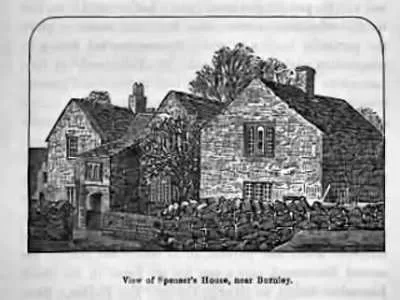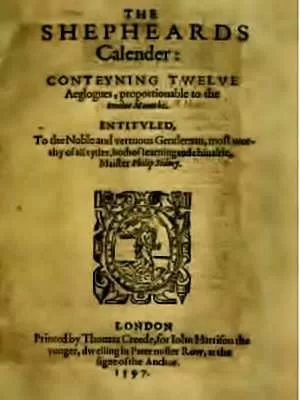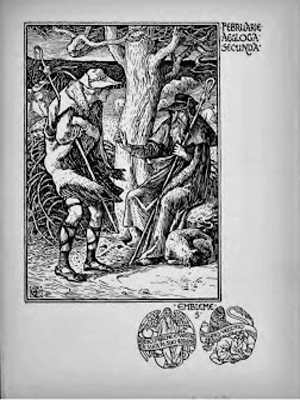You should never, so they say, meet your heroes. This adage rings particularly true when we delve into the life of Edmund Spenser, one of the most celebrated poets of the Elizabethan era. While his literary contributions, especially The Faerie Queene, are revered, a closer examination of his life reveals a complex and troubling figure.
In this article, we will explore Spenser’s background, his connections to Lancashire, and the dark undertones of his later works, particularly his views on Ireland.
Spenser’s Early Life and Education
Edmund Spenser was born around 1552 in London to John Spenser, a journeyman cloth maker who had migrated from Lancashire. The Spenser family had deep roots in the Burnley area, where the surname is still common today. Spenser’s early education took place at Merchant Taylors’ School, a prestigious institution that laid the groundwork for his future literary career. He later became a sizar at Pembroke Hall, Cambridge, a position that indicated his family’s financial struggles. As a sizar, he worked in the college kitchens and served at tables in exchange for reduced tuition fees.

Despite these challenges, Spenser’s academic journey was marked by significant connections. He received financial support from a charitable bequest linked to the Nowell family, who were prominent figures in the region. After graduating, Spenser faced disappointment when he lost a Fellowship to Lancelot Andrews, who would later become the Bishop of Winchester. This setback led him to seek refuge with friends and family in the North of England, where he likely began to develop his poetic voice.
Lancashire Connection
Spenser’s ties to Lancashire are evident in his early works, particularly The Shepheard’s Calendar (1579). This pastoral poem contains numerous references to local dialect and culture, showcasing the influence of his upbringing. T.T. Wilkinson, in a speech to the Historic Society of Lancashire in 1867, identified over forty words from East Lancashire dialect present in the poem. These words, which Wilkinson charmingly referred to as “Folkspeak,” highlight the regional vernacular that Spenser incorporated into his writing.

The character of Rosalind in The Shepheard’s Calendar is believed to be inspired by Rose Dyneley, a local woman who spurned Spenser’s affections. This personal connection adds a layer of poignancy to his work, as it reflects the poet’s own experiences of love and loss. The geographical references in his poetry, such as Extwistle and Briercliffe, further solidify his bond with the Lancashire landscape.
The Shift in Tone: A View of the Present State of Ireland
Despite his early promise as a poet, Spenser’s later work took a dark turn. In 1596, he penned A View of the Present State of Ireland, a text that has been widely criticized for its hateful rhetoric. Written in the form of a dialogue between Irenius and Eudoxus, the work presents a scathing critique of Irish culture and society. Irenius argues for a scorched earth policy, advocating for the subjugation of the Irish people through starvation and violence.

This text is particularly jarring when viewed in the context of the Great Famine that would devastate Ireland in the mid-19th century. Spenser’s views reflect a colonial mindset that sought to dehumanize the Irish, reducing their rich culture to mere inferiority. The irony of his arguments is palpable, as they foreshadow the very real suffering that would occur in the years to come.
Legacy and Reflection
Edmund Spenser’s legacy is a complicated one. On one hand, he is celebrated for his literary genius and contributions to English poetry. His skillful use of language and allegory in The Faerie Queene has earned him a place among the greats of English literature. However, his later writings reveal a troubling perspective that cannot be overlooked.
As we reflect on Spenser’s life and work, it becomes clear that the adage about meeting heroes holds true. While his poetry may inspire admiration, the man behind the words presents a more complex and, at times, disturbing figure. It is a reminder that even the most celebrated artists can harbor views that are deeply problematic.
Conclusion
In conclusion, Edmund Spenser’s life and work serve as a fascinating case study in the duality of human nature. His early connections to Lancashire and the rich cultural tapestry of his poetry stand in stark contrast to the hateful ideologies expressed in his later writings. As we continue to explore the legacies of historical figures, it is essential to approach their lives with a critical eye, recognizing both their contributions and their flaws. In the end, perhaps it is best to appreciate Spenser’s literary achievements while remaining wary of the darker aspects of his worldview.

